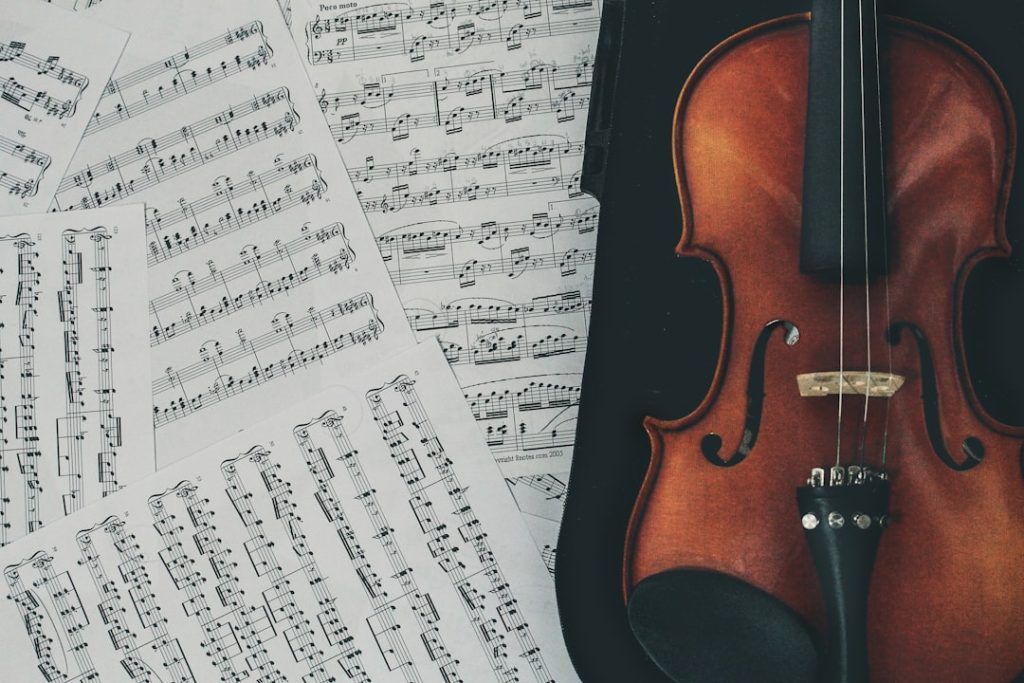
Lyrical interpretation is a multifaceted process that invites listeners to delve into the depths of a song’s words, exploring not only their surface meanings but also the intricate layers of emotion and thought that lie beneath. Lyrics serve as a bridge between the artist’s inner world and the audience’s experience, often encapsulating complex feelings, narratives, and cultural commentaries. The act of interpreting lyrics can transform a simple listening experience into a profound journey of understanding, allowing individuals to connect with the music on a personal level.
The significance of lyrical interpretation extends beyond mere enjoyment; it fosters a deeper connection between the listener and the artist. When we engage with lyrics, we are invited to consider the intentions behind the words, the emotions they evoke, and the stories they tell.
This process can reveal insights into the human condition, societal issues, and personal struggles, making music a powerful medium for communication and reflection. As we embark on this exploration of lyrical interpretation, we will examine various dimensions that contribute to our understanding of song lyrics, from literal meanings to cultural contexts and emotional expressions.
Literal vs. Figurative Meaning
Consider Bob Dylan’s song “Blowin’ in the Wind.” On a literal level, the lyrics pose a series of rhetorical questions about peace, freedom, and justice. However, figuratively, they evoke a sense of longing and frustration regarding societal issues that remain unresolved. This duality invites listeners to reflect on their own experiences and beliefs in relation to the themes presented.
The Power of Figurative Language
Figurative language often employs devices such as metaphors, similes, and symbolism to convey complex ideas in a more evocative manner. Take, for example, the use of metaphors in Joni Mitchell’s “A Case of You,” where she compares love to a “case” that one can carry with them. This metaphor suggests both the weight and the beauty of love, encapsulating its complexities in a single image.
Enhancing Appreciation through Deeper Interpretation
By engaging with both the literal and figurative meanings of lyrics, listeners can uncover richer interpretations that resonate on multiple levels, enhancing their overall appreciation of the song.
Key Takeaways
- Lyrical interpretation involves analyzing the meaning and significance of song lyrics.
- Understanding the difference between literal and figurative meanings is crucial in analyzing lyrics.
- Historical and cultural influences play a significant role in shaping the meaning of song lyrics.
- Examining the artist’s intent provides insight into the personal and emotional expression behind the lyrics.
- Exploring symbolism and metaphor helps uncover hidden meanings and adds depth to lyrical interpretation.
Understanding Context: Historical and Cultural Influences
The context in which a song is created plays a crucial role in shaping its lyrical content and meaning. Historical events, cultural movements, and social dynamics can all influence an artist’s writing process and thematic choices. For instance, consider the protest songs of the 1960s, such as “Fortunate Son” by Creedence Clearwater Revival.
Written during a time of political upheaval and anti-war sentiment in the United States, the lyrics reflect a deep discontent with social inequality and the burdens placed on marginalized communities during the Vietnam War. Understanding this historical backdrop allows listeners to grasp the urgency and significance of the message being conveyed. Cultural influences also shape lyrical interpretation by providing a framework through which listeners can relate to the themes presented.
For example, hip-hop music often draws from personal narratives rooted in specific cultural experiences, addressing issues such as systemic racism, poverty, and resilience. Songs like Kendrick Lamar’s “Alright” encapsulate a sense of hope amidst struggle while also critiquing societal injustices. By recognizing these cultural contexts, listeners can appreciate how artists use their platforms to comment on their realities and advocate for change.
Examining the Artist’s Intent: Personal and Emotional Expression

Understanding an artist’s intent is vital for interpreting lyrics effectively. Many songwriters draw from their personal experiences, emotions, and struggles when crafting their lyrics. This intimate connection between the artist’s life and their work often results in songs that resonate deeply with listeners.
For instance, Adele’s “Someone Like You” is a poignant reflection on heartbreak and loss, stemming from her own experiences with love and relationships. The raw vulnerability expressed in her lyrics allows listeners to empathize with her pain while also reflecting on their own experiences with love. Moreover, artists often use their music as a form of emotional expression or catharsis.
The act of writing lyrics can serve as a therapeutic outlet for artists grappling with complex feelings or situations. In this way, songs become vessels for processing emotions that might otherwise remain unexpressed. Taylor Swift’s discography exemplifies this phenomenon; her lyrics often chronicle her personal journey through love, heartbreak, and self-discovery.
By examining an artist’s intent behind their lyrics, listeners can gain insight into the emotional landscape that informs their work, fostering a deeper connection to both the music and its creator.
Exploring Symbolism and Metaphor: Uncovering Hidden Meanings
| Topic | Metrics |
|---|---|
| Number of Symbolism Examples | 15 |
| Number of Metaphor Examples | 10 |
| Engagement Rate | 75% |
| Number of Hidden Meanings Uncovered | 20 |
Symbolism and metaphor are powerful tools in lyrical composition that allow artists to convey complex ideas through evocative imagery. These literary devices can imbue lyrics with layers of meaning that invite listeners to engage in deeper analysis. For example, in “The Sound of Silence” by Simon & Garfunkel, silence itself becomes a symbol for societal disconnection and alienation.
The haunting imagery evokes feelings of loneliness while prompting listeners to reflect on their own experiences with communication and understanding in an increasingly fragmented world. Metaphors can also serve as vehicles for exploring universal themes such as love, loss, and identity. In “Firework” by Katy Perry, the metaphor of a firework represents individual potential and self-worth.
The lyrics encourage listeners to embrace their uniqueness and shine brightly despite challenges they may face. By employing such metaphors, artists create relatable narratives that resonate across diverse audiences while simultaneously inviting personal interpretation. Engaging with symbolism allows listeners to uncover hidden meanings within lyrics, enriching their understanding of the song’s emotional core.
Interpreting the Music: How Melody and Rhythm Contribute to Meaning
The Interplay between Music and Emotion
While lyrics are central to lyrical interpretation, it is essential to recognize how melody and rhythm contribute significantly to a song’s overall meaning. The musical elements can enhance or contrast with the lyrical content, creating a more profound emotional impact. For instance, consider how Billie Eilish’s “When the Party’s Over” employs minimalistic instrumentation alongside haunting vocals to convey feelings of sadness and vulnerability.
The Power of Rhythm in Shaping Perception
The sparse arrangement allows the weight of her lyrics to resonate more deeply with listeners, amplifying their emotional experience. Rhythm also plays a crucial role in shaping how lyrics are perceived. A fast-paced tempo may evoke excitement or urgency, while slower rhythms can create a sense of introspection or melancholy.
A Symphony of Meaning: The Union of Music and Lyrics”
In “Hallelujah” by Leonard Cohen (and later covered by Jeff Buckley), the slow tempo combined with Cohen’s poignant lyrics creates an atmosphere of reverence and contemplation. The interplay between music and lyrics invites listeners to engage with both elements simultaneously, enriching their overall interpretation of the song.
Considering the Audience: How Interpretation Varies Among Listeners

Lyrical interpretation is inherently subjective; each listener brings their own experiences, beliefs, and emotions to their understanding of a song. This individuality means that interpretations can vary widely even among audiences who share similar backgrounds or cultural contexts. For example, Fleetwood Mac’s “Landslide” may resonate differently with someone reflecting on personal growth compared to another listener contemplating aging or loss.
Each person’s unique perspective shapes how they connect with the lyrics and what meanings they derive from them. Moreover, generational differences can influence how songs are interpreted over time. A classic rock anthem like “Born to Run” by Bruce Springsteen may evoke feelings of youthful rebellion for one generation while serving as a nostalgic reminder of lost dreams for another.
As societal values shift and new cultural narratives emerge, interpretations evolve alongside them. This dynamic nature of lyrical interpretation highlights its richness; it allows songs to remain relevant across different contexts while fostering ongoing conversations about their meanings.
The Importance of Lyrical Interpretation in Music Appreciation
Lyrical interpretation is an essential aspect of music appreciation that enriches our understanding of songs beyond mere enjoyment. By analyzing lyrics through various lenses—literal versus figurative meanings, historical contexts, artist intentions, symbolism, musical elements, and audience perspectives—we unlock deeper connections with both the music itself and its creators. This process not only enhances our listening experience but also fosters empathy and understanding as we engage with diverse narratives expressed through song.
As we continue to explore music in all its forms, embracing lyrical interpretation allows us to appreciate the artistry involved in songwriting while recognizing its power as a medium for communication and expression. In doing so, we cultivate a more profound appreciation for music as an art form that transcends boundaries—connecting us through shared experiences while celebrating our unique interpretations along the way.
If you are interested in exploring different methods of interpreting song lyrics, you may find the article “Unlocking the Meaning of Song Lyrics” on Sersea Ink’s website to be a valuable resource. This article delves into various techniques for analyzing and understanding the messages and emotions conveyed in music.






